Make the best use of Scientific Research and information from our 700+ peer reviewed, Open Access Journals that operates with the help of 50,000+ Editorial Board Members and esteemed reviewers and 1000+ Scientific associations in Medical, Clinical, Pharmaceutical, Engineering, Technology and Management Fields.
Meet Inspiring Speakers and Experts at our 3000+ Global Conferenceseries Events with over 600+ Conferences, 1200+ Symposiums and 1200+ Workshops on Medical, Pharma, Engineering, Science, Technology and Business
Research Article Open Access
Oxygen Uptake during Aerobic Cycling Exercise Simultaneously Combined with Neuromuscular Electrical Stimulation of Antagonists
| Omoto Masayuki1, Hiroo Matsuse1*, Yoshio Takano2, Shin Yamada3, Hiroshi Ohshima3, Yoshihiko Tagawa4and Naoto Shiba1 | |
| 1Division of Rehabilitation, Kurume University Hospital, 67 Asahi-Machi, Kurume, Japan | |
| 2Department of Physical Therapy School of Health Sciences at Fukuoka, International University Health and Welfare, Japan | |
| 3Japan Aerospace Exploration Agency, Human space technology and astronauts department, 2-1-1, Sengen, Tsukuba, Japan | |
| 4Department of Mechanical and Control Engineering, Kyushu Institute of Technology, 1-1 Sensui-cho, Tobata-ku, Kitakyushu, Japan | |
| Corresponding Author : | Hiroo Matsuse Division of Rehabilitation Kurume University Hospital, 67 Asahi-machi Kurume, Fukuoka 830-0011, Japan Tel: +81- (0)942-31-7568 Fax: +81-(0)942-46-6002 E-mail: matsuse_hiroh@kurume-u.ac.jp |
| Received July 02, 2013; Accepted October 29, 2013; Published November 07, 2013 | |
| Citation: Masayuki O, Matsuse H, Takano Y, Yamada S, Ohshima H, et al. (2013) Oxygen Uptake during Aerobic Cycling Exercise Simultaneously Combined with Neuromuscular Electrical Stimulation of Antagonists. J Nov Physiother 3:185. doi:10.4172/2165-7025.1000185 | |
| Copyright: © 2013 Masayuki O, et al. This is an open-access article distributed under the terms of the Creative Commons Attribution License, which permits unrestricted use, distribution, and reproduction in any medium, provided the original author and source are credited. | |
Visit for more related articles at Journal of Novel Physiotherapies
| Keywords |
| Analysis of expired gas; Ergometer; Exercise intensity; Metabolic cost |
| Abbreviations |
ES-Electrical Stimulation; HR-Heart Rate; HTSHybrid
Training System; NMES-Neuromuscular Electrical Stimulation;
VC-Volitional Contraction;  -Carbon dioxide Output; -Carbon dioxide Output;  -Expired Ventilation; -Expired Ventilation;  -Oxygen Uptake; VT-Ventilatory Threshold -Oxygen Uptake; VT-Ventilatory Threshold |
| Introduction |
| Recently it is said that the combined application of Electrical Stimulation (ES) and Volitional Contractions (VC) is more effective for muscle strengthening and muscle hypertrophy than ES or VC alone [1-2]. A Hybrid Training System (HTS) that creates resistance to the motion of a voluntarily contracting agonist muscle by means of the force generated by its electrically stimulated antagonist has been developed [3] (Figure 1). HTS can train both voluntarily contracting agonist muscles and electrically stimulated antagonist muscles simultaneously, and is one of the methods that serve to make up for the limitations of Neuromuscular Electrical Stimulation (NMES) [4]. Resistance training using HTS has been shown to improve muscle hypertrophy and strength while using relatively low ES intensity compared with ES alone and/ or conventional weight training [3-6]. In the upper extremity, elbow flexion isometric torque had increased about 56% and the biceps muscle had enlarged by about 14% using HTS over an 8-week period, and this was significantly greater than or similar to isotonic weight training and NMES [4]. In the lower extremity, the knee extension isokinetic torque at 30°/sec had increased about 28% using HTS over a 6-week period, and it was comparable to weight training with 15 repetition maximum loads [5]. In these studies, HTS has been used as exercise resistance in joint bending exercise as a substitute for weights. However, HTS has not been previously used in combination with other exercise to add further resistance (e.g. dumbbell exercise or cycling exercise). Theoretically, HTS can be used for exercise in every agonist-antagonist group of muscles [7]. We devised a new exercise technique that combines HTS with cycling exercise based on the concept that aerobic exercise and electrically eccentric exercise are possible simultaneously. However, the influences that HTS has on aerobic exercise are not known. |
| Cycling exercise is widely used as an aerobic exercise method to improve exercise capacity or physical fitness [8-11]. In general, its effect on muscle strengthening has been not demonstrated [12,13], although there are some reports that cycling exercise improved muscle strength of the lower extremity [14-16]. On the other hand, eccentric muscle contractions combined with cycling exercise have been studied [17-19]. Because eccentric muscle contractions generate 30% to 50% more muscle force than concentric muscle contractions, eccentric exercise is more effective for muscle strengthening than concentric exercise [20]. Furthermore, in eccentric exercise, a large force is produced with very little energy demand [21,22]. Lastayo et al. reported that 8 weeks of eccentric cycling exercise produced a 36% isometric leg strength improvement and 52% fiber area increase while training at exercise intensities that did not promote strength or size increases concentrically in healthy young subjects [18]. Although this eccentric cycling exercise is passive exercise, HTS has not only passive (electrically stimulated) eccentric exercise but also active voluntary concentric exercise. Electrically stimulated eccentric antagonist contractions can increase muscle strength and activity of not only the antagonist but also the agonist [7]. Therefore, it is inferred that metabolic cost can increase by combining electrically stimulated eccentric contractions with voluntary concentric contractions. |
For exercise prescription, the percentage of maximal oxygen uptake
( ) is commonly used as one of the targets of exercise intensity.
Therefore, in order to calculate an appropriate exercise prescription it
is necessary to know ) is commonly used as one of the targets of exercise intensity.
Therefore, in order to calculate an appropriate exercise prescription it
is necessary to know  during the exercise with HTS. We evaluated
VO2 during HTS with a moderate cycle ergometer (HER) by comparing
it with VO2 during a volitional moderate cycle ergometer alone (VER). during the exercise with HTS. We evaluated
VO2 during HTS with a moderate cycle ergometer (HER) by comparing
it with VO2 during a volitional moderate cycle ergometer alone (VER). |
| Methods |
| Setting and Participants |
| The Ethics Committee of Kurume University and the Japan Aerospace Exploration Agency approved the clinical design of this study protocol. The study was designed in accordance with the ethical standards of the Helsinki Declaration of 1975 and received the approval of the Ethics Committee of Kurume University and the Japan Aerospace Exploration Agency. All procedures were fully explained to the participants who gave their written informed consent to participate. 11 healthy young men [mean (standard deviation (SD)) age 21 (1.3) yrs; height 173.3 (6.5) cm; and weight 67.7 (8.1) kg] agreed to participate. The participants were examined after giving consent, by an orthopedic specialist who was not involved in this study. They were excluded if they clearly deviated from the inclusion criteria. This included the requirements that they had no adverse medical history, and an examination for normal physical fitness, strength, sensation [23], and range of motion according to the criteria of the Japanese Orthopedic Association [24]. They also had not participated in any regular or on-going sports activities although occasional sports were allowed. Randomization was performed using a computer-generated randomized sequence of exercise order created before the beginning of this investigation. Each participant was tested during either VER or HER (randomly selected), and was tested for the other on same day an hour later. |
| Intervention |
All participants were measured for height and body weight,
and performed the ramp exercise test to determination their peak oxygen consumption  and two cycle ergometer exercise
tests. The first exercise test consisted of a ramp protocol performed
on an electronically braked cycle ergometer until exhaustion levels
were reached. On the second exercise test, which was carried out on
another day, participants were measured for gas exchange during cycle
ergometer exercise according to the following protocol. They pedaled
with their feet strapped into the pedals during all exercise tests. and two cycle ergometer exercise
tests. The first exercise test consisted of a ramp protocol performed
on an electronically braked cycle ergometer until exhaustion levels
were reached. On the second exercise test, which was carried out on
another day, participants were measured for gas exchange during cycle
ergometer exercise according to the following protocol. They pedaled
with their feet strapped into the pedals during all exercise tests. |
| Ramp exercise test protocol |
After a two minute rest sitting on the cycle ergometer (STB-
2400, Nihon Kohden, Tokyo, Japan), the test started at 20 W and
the workload was increased by 20 or 30 W/min according to the
physiological profile of each subject [25]. Pedaling cadence was kept
constant at 60 to 80 rev/min using a pedal frequency meter depending
on the subject’s preference. The ramp rate was determined so that the
test duration was 8-12 min. The exercise test was terminated when the
pedal cadence could not be maintained at 60 rev/min, and  was
determined. Verbal encouragement was given during the ramp exercise
test. The ventilatory threshold (VT) was determined as power output
(W) corresponding to the first breakpoint in carbon dioxide production was
determined. Verbal encouragement was given during the ramp exercise
test. The ventilatory threshold (VT) was determined as power output
(W) corresponding to the first breakpoint in carbon dioxide production
 with respect to with respect to  (the so called V-slope method) [26]. (the so called V-slope method) [26]. |
| VER test protocol |
| The VER test was performed to obtain an analysis of expired gas. After a 2 minutes rest sitting on the cycle ergometer, the test started at 20 W and the workload was increased by 20 W to 100 W every 3 minutes. Pedaling cadence was kept constant at 60 rev/min with the aid of a pedal frequency meter and a metronome, which is not thought to affect blood pressure or heart rate [27]. To prevent muscle fatigue, exercise test time was limited to 15 minutes. |
| HER protocol |
| The HER test was performed to obtain an analysis of expired gas. After a 2 minute rest sitting on the cycle ergometer, the test started at 20 W and the workload was increased by 20 W to 100 W every 3 minutes. For the HER test, HTS was performed simultaneously during a volitional moderate cycle ergometer with the participant’s hamstrings electrically stimulated as he volitionally extended his knee, and his quadriceps electrically stimulated as he volitionally flexed his knee to provide motion resistance (Figure 2). The pedaling cadence was kept constant at 60 rev/min. During HER both lower extremities were stimulated in synchronization to the bending motions of the knee by using HTS. The joint range of motion was set at a nearly 90° arc that extended from 20° to 110° (0° indicating full knee extension) by adjusting the height of the saddle. |
| Electrical stimulation protocol |
| The ES device has been described previously [3,4] and consists of a custom designed waveform generator capable of delivering stimulating signals with unique frequencies and waveforms to as many as 8 pairs of electrodes and a joint motion sensor (Mutoh Engineering Inc., Tokyo, Japan) that triggers stimulation of the antagonist once it senses the initiation of an agonist’s VC [28]. Pairs of 3×6-cm low impedance gelcoated silver fiber electrodes (Nihon Medix Co, 315-1, Mukai-machi, Minami-hanashima, Matsudo-shi, Chiba-ken, Japan.) were placed over each motor point on the quadriceps and the hamstrings and a detector was also attached (Top Co, 19-10, Senjyunakai-machi, Adachi-ku, Tokyo, Japan). |
| Stimulation Parameters |
| The stimulation waveform used in this study is similar in some ways to that of “Russian stimulation” [29] and consists of a 5,000 Hz carrier frequency modulated at 40 Hz (2.4 ms on, 22.6 ms off) to deliver a rectangular biphasic pulse [3]. The electrical stimulator gives constant voltage stimulus to the human body (regulated voltage). It has a stimulus pattern with interlock and a limiter for safety. Therefore, the effective current is interlocked at 20 mA, and the peak voltage and current is limited to under 72V and 90 mA. Stimulation intensities were determined one week before the evaluation session began. We regulated stimulation intensity so that the exercise intensities were adjusted to 80% of the maximum comfortable intensity in order to successfully improve muscle strength and mass without causing pain [4,6]. The mean stimulating voltages were 32.4 (SD=9.7) V and 30.6 (SD=7.8) V for the quadriceps femoris and hamstring muscles, respectively. At these ES intensities, all subjects were able to pedal during HER. |
| Measuring Methods |
Environmental conditions were similar for all exercise tests (21
to 24 degrees centigrade, 45 to 55% relative humidity). During the
exercise tests, gas exchange data was collected continuously using an
automated breath by breath system (AE-300S, Minato Medical Science
Co. Ltd., Osaka, Japan) implementing the standard technique. The
AE-300S consists of a microcomputer, a hot wire flowmeter, and a
gas analyzer, which contains a sampling tube, filter, suction pump, O2
analyzer made by a paramagnetic oxygen transducer and an infrared
CO2 analyzer. Ventilatory parameters were measured using a hot-wire
flow meter, and the flow meter was calibrated with a syringe of known
volume (2.0 l). A zirconium sensor and an infrared absorption analyzer,
respectively, measured O2 and CO2 concentrations. The gas analyzer
was calibrated to known standard gas levels (O2 15.16%, CO2 5.023%)
before each test. Also heart rates (HR, beats/min) were continuously
monitored by electrocardiogram during the tests.  , ,  , and
pulmonary ventilation , and
pulmonary ventilation  were calculated and recorded during the
cycle ergometer exercise tests. The values of were calculated and recorded during the
cycle ergometer exercise tests. The values of  (ml/kg/min), (ml/kg/min),  (L/min),
(L/min),  (L/min) and HR were averaged during the last 1 minute of
the steady rate portion of each workload (3 min, 6 min, 9 min, 12 min,
and 15 min after exercise start) and used for data analysis. (L/min) and HR were averaged during the last 1 minute of
the steady rate portion of each workload (3 min, 6 min, 9 min, 12 min,
and 15 min after exercise start) and used for data analysis. |
| Data Analysis |
All variables are presented as means (SD). The linear relationship
between each workload (20W, 40W, 60W, 80W, 100W) and  (ml/ kg/min), (ml/ kg/min),  (L/min), (L/min),  (L/min) and HR (beats) was checked
graphically. For each of the comparisons which satisfied linearity, the
linear relationship equation was estimated by the mixed effect model.
We judged whether a slope for VER and one for HER were the same by
interaction (group×workload) terms. If p for the interaction term was
larger than 0.25, we judged their slopes were common and conducted
the mixed effect model without the interaction term again. (L/min) and HR (beats) was checked
graphically. For each of the comparisons which satisfied linearity, the
linear relationship equation was estimated by the mixed effect model.
We judged whether a slope for VER and one for HER were the same by
interaction (group×workload) terms. If p for the interaction term was
larger than 0.25, we judged their slopes were common and conducted
the mixed effect model without the interaction term again. |
| All the statistical analyses were performed using SAS Version 9.3 statistical software (SAS Institute Inc., Cary, NC, USA) and p values ≤ 0.05 were considered to be statistically significant. |
| Results |
| Both height and weight of participants were average for Japanese height 173.3 (6.5) cm; and weight 67.7 (8.1) kg. The national average for 20-24 yr males Japanese is height 172.2 (5.7) cm; and weight 65.5 (8.7) kg) [23]. All participants completed all of the exercise tests without any problems such as not being able to continue pedaling the ergometer from pain or fatigue, although six of eleven participants complained of slight post exercise delayed-onset muscle soreness on the day after the tests. |
VT and  were 20.8 (2.9) ml・kg-1・min-1 and 41.0 (4.2)
ml・min-1, respectively. These values were standard for Japanese adults
[23]. The ratio for were 20.8 (2.9) ml・kg-1・min-1 and 41.0 (4.2)
ml・min-1, respectively. These values were standard for Japanese adults
[23]. The ratio for  of VT was 51.0 (8.0)%. At 100W during
VER, 3 participants were higher than VT, also 5 participants at 100W
during HER were higher than VT. All participants pedaling at a
workload between 20W and 80W during VER and HER were pedaling
below their individual VT. of VT was 51.0 (8.0)%. At 100W during
VER, 3 participants were higher than VT, also 5 participants at 100W
during HER were higher than VT. All participants pedaling at a
workload between 20W and 80W during VER and HER were pedaling
below their individual VT. |
The graph of  during both VER and HER showed the
linear relationship to the workload (Figure 3A, 3B, and Figure 4A).
Furthermore, for during both VER and HER showed the
linear relationship to the workload (Figure 3A, 3B, and Figure 4A).
Furthermore, for   and HR, a linear relationship to the
workload was observed similar to and HR, a linear relationship to the
workload was observed similar to  (Figure 4B, 4C, 4D). The
interaction terms (group×workload) in the mixed effect model
in (Figure 4B, 4C, 4D). The
interaction terms (group×workload) in the mixed effect model
in  , ,  , ,  and HR were larger than 0.25. Therefore, we
estimated the linear relationship equations by the mixed effect model
without the interaction term. The results were summarized in Table 1.
The common slope of and HR were larger than 0.25. Therefore, we
estimated the linear relationship equations by the mixed effect model
without the interaction term. The results were summarized in Table 1.
The common slope of  was 0.14 (0.02). Each intercept of VER was
4.6 (0.50) (Figure 5A). was 0.14 (0.02). Each intercept of VER was
4.6 (0.50) (Figure 5A).  During HER was significantly higher by
2.1 (0.17) ml/kg/min than VER at moderate intensities (20W-100W)
(p<0.001) (Figure 5A). This increase was about 20% of VER. The
common slopes of During HER was significantly higher by
2.1 (0.17) ml/kg/min than VER at moderate intensities (20W-100W)
(p<0.001) (Figure 5A). This increase was about 20% of VER. The
common slopes of  , ,  and HR were 9.1 (1.12), 0.23 (0.03),
and 0.39 (0.05), respectively. Each intercept of VER of and HR were 9.1 (1.12), 0.23 (0.03),
and 0.39 (0.05), respectively. Each intercept of VER of  , ,  , and
HR was 260.10 (44.25), 10.31 (1.35), 85.8 (2.84) (Figures 5B,5C,5D). , and
HR was 260.10 (44.25), 10.31 (1.35), 85.8 (2.84) (Figures 5B,5C,5D).
 , ,  and HR during HER was significantly higher than VER
93.33 (12.16) ml/min, 2.97 (0.41) l/min, and 5.07 (1.06) beats (all,
p<0.001) (Figure 5B, 5C,5D). and HR during HER was significantly higher than VER
93.33 (12.16) ml/min, 2.97 (0.41) l/min, and 5.07 (1.06) beats (all,
p<0.001) (Figure 5B, 5C,5D). |
| Discussion |
This is the first report of HTS combined with aerobic exercise.
The findings of this study showed that HTS, utilizing electrically
stimulated eccentric antagonist muscle contractions, increased  about 2.1 (0.17) ml/kg/min from aerobic cycle ergometer exercise at
moderate-intensity. Furthermore, similar to conventional aerobic
exercise,
about 2.1 (0.17) ml/kg/min from aerobic cycle ergometer exercise at
moderate-intensity. Furthermore, similar to conventional aerobic
exercise,  , , , , and HR during HER had a linear relationship
to workload. Therefore HER resulted in stronger exercise intensity than
VER at the same workload. and HR during HER had a linear relationship
to workload. Therefore HER resulted in stronger exercise intensity than
VER at the same workload. |
Generally, aerobic exercise improves exercise capacity and/
or physical fitness. On the other hand, resistance exercise mainly
improves muscle strength and/or mass. Therefore, in conformity with
the training purpose or individual ability, an exercise prescription is chosen from aerobic exercise or resistance exercise. Recently the
benefits of combining aerobic exercise and resistance exercise have
been reported [30-32]. For heart failure, Mandic et al. reported that
the combined aerobic and resistance training were effective to improve
muscle strength and endurance as well as exercise capacity (peak  ) [32]. In elderly women, Ferketich et al. reported that to add
resistance training to aerobic training induced greater muscle strength,
greater sub-maximal endurance and reversed type I fibre atrophy more
effectively than aerobic training alone [31]. In these reports, aerobic
training and resistance training were performed separately on the
same day or a different day. Commonly resistance exercise for muscle
strengthening and muscle hypertrophy requires relatively high exercise
intensity. Therefore resistance exercise is anaerobic and discontinuous.
In other words, it is usually very difficult to perform both resistance
exercise and aerobic exercise simultaneously. HTS is resistance exercise
using ES of middle exercise intensity combined with VC of low exercise
intensity [3-4]. In this study, adding HTS to VER increased ) [32]. In elderly women, Ferketich et al. reported that to add
resistance training to aerobic training induced greater muscle strength,
greater sub-maximal endurance and reversed type I fibre atrophy more
effectively than aerobic training alone [31]. In these reports, aerobic
training and resistance training were performed separately on the
same day or a different day. Commonly resistance exercise for muscle
strengthening and muscle hypertrophy requires relatively high exercise
intensity. Therefore resistance exercise is anaerobic and discontinuous.
In other words, it is usually very difficult to perform both resistance
exercise and aerobic exercise simultaneously. HTS is resistance exercise
using ES of middle exercise intensity combined with VC of low exercise
intensity [3-4]. In this study, adding HTS to VER increased  by
about 20%. This exercise intensity newly applied by HTS would be
about 2.1 ml/kg/min. Moreover, HER with a workload of 20 W to 100
W resulted in aerobic exercise equivalent to about 23.8% to 46.1% of by
about 20%. This exercise intensity newly applied by HTS would be
about 2.1 ml/kg/min. Moreover, HER with a workload of 20 W to 100
W resulted in aerobic exercise equivalent to about 23.8% to 46.1% of
 at moderate exercise intensity. Therefore, HER seems to be
an exercise technique which can add electrical resistance exercise to
aerobic cycling exercise simultaneously. Mackenzie et al. reported that
electrically stimulated eccentric antagonist contractions could increase
muscle strength and activity of agonist muscles, and provided resistance
of motion for the agonist [7]. In this study, the resistance newly added
by HTS to VER seemed to increase at moderate exercise intensity. Therefore, HER seems to be
an exercise technique which can add electrical resistance exercise to
aerobic cycling exercise simultaneously. Mackenzie et al. reported that
electrically stimulated eccentric antagonist contractions could increase
muscle strength and activity of agonist muscles, and provided resistance
of motion for the agonist [7]. In this study, the resistance newly added
by HTS to VER seemed to increase  . . |
Furthermore, because  during HER showed a linear relationship
with workload, an adjustment of the exercise intensity in conformity
with the training target would be possible by adjusting the workload in
the same way as conventional aerobic exercise. Moreover, it was similar
in HR too. The metabolic cost of HER may be able to be predicted
easily from HR similar to conventional exercise. In eccentric cycling
exercise, the relationships between HR and during HER showed a linear relationship
with workload, an adjustment of the exercise intensity in conformity
with the training target would be possible by adjusting the workload in
the same way as conventional aerobic exercise. Moreover, it was similar
in HR too. The metabolic cost of HER may be able to be predicted
easily from HR similar to conventional exercise. In eccentric cycling
exercise, the relationships between HR and  were very similar [33]. Therefore eccentric cycling training is currently based on exercise HR
[18,19,34]. However, HR was higher during eccentric cycling exercise
than concentric cycling exercise even though the metabolic demand
was similar [35]. Dufour et al. showed that an important application for
eccentric cycling exercise was to consider higher exercise HR to reach
a comparable level of were very similar [33]. Therefore eccentric cycling training is currently based on exercise HR
[18,19,34]. However, HR was higher during eccentric cycling exercise
than concentric cycling exercise even though the metabolic demand
was similar [35]. Dufour et al. showed that an important application for
eccentric cycling exercise was to consider higher exercise HR to reach
a comparable level of  [17]. On the other hand, in HER (eccentric
cycling combined with VC) the relationships not only between [17]. On the other hand, in HER (eccentric
cycling combined with VC) the relationships not only between  and workload but also between HR and workload were almost parallel
unlike eccentric cycling exercise (without VC). Therefore HER training
based on exercise HR seems to be possible.
and workload but also between HR and workload were almost parallel
unlike eccentric cycling exercise (without VC). Therefore HER training
based on exercise HR seems to be possible. |
| NMES activation is considered nonselective with regard to the type of motor unit and synchrony, and it preferentially activates Type II fibers as compared with voluntary muscle contractions [1,36]. Therefore, NMES is not commonly used for endurance training, but is used for resistance training. HTS is a type of NMES, and is resistance exercise using electrically stimulated eccentric contractions [3,4]. The presence of an eccentric component may also be beneficial in that these contractions are neuromuscularly more efficient [37], less metabolically demanding [21,34-35], and more conducive to hypertrophy than concentric contractions [18,38]. Indeed in previous studies, HTS had successfully improved muscle strength and muscle mass in healthy men when used for bending exercises of the elbow or knee [3-5]. It is known that a given level of stimulation will produce an eccentric contraction that is 20-30% stronger than its isometric counterpart [39]. Therefore, an eccentric contraction of HTS is thought to improve muscle strength and mass as effective resistance exercise [3-5]. LaStayo et al. reported that eccentric cycling training at low exercise intensity (54-65% of peak heart rate) without VC could increase the size and strength of muscles even though a classic cycle ergometer could not [18]. HER is utilizing eccentric cycling training, too. Therefore HER would have the potential of providing resistance exercise, and muscular strength and mass augmentation could be expected. HER at the same pedaling intensity (workload) as VER would increase not only the perceived exercise intensity but also the metabolic cost. Moreover increasing the metabolic rate using HER would lead to increased caloric expenditure during exercise. HER may be available where exercise opportunity and/ or equipment is limited such as microgravity conditions or extended bed rest. |
| Study Limitations |
| This study had some limitations. There were the limitations of the small number participants and the fact that all of them were young men. A long-term training study is necessary to show that HER is an effective technique combining aerobic and resistance exercise by evaluating exercise capacity, physical fitness, muscle strength, muscle mass, and so on. This study showed the influences of HER on aerobic cycling exercise, and it is the pilot study that showed HER serves as aerobic exercise with simultaneous electrical resistance exercise. Furthermore, a future training study was enabled by discovering the exercise intensity of HER through this study. |
| Conclusions |
In conclusion, the finding of this study is that the combined
application of aerobic cycling exercise and resistance through an
electrically stimulated antagonist (cycle ergometer with HTS) could
result in increased  with a linear relationship to workload in
comparison to aerobic cycling exercise alone. Furthermore HER
resulted in stronger exercise intensity than VER with the same
workload. HER may be a new exercise technique in which aerobic
exercise and resistance exercise are combined. with a linear relationship to workload in
comparison to aerobic cycling exercise alone. Furthermore HER
resulted in stronger exercise intensity than VER with the same
workload. HER may be a new exercise technique in which aerobic
exercise and resistance exercise are combined. |
| Acknowledgements |
| Author Contributions |
| All authors contributed to writing. Dr. Ohmoto, Dr. Matsuse and Dr. Shiba (including development of Hybrid exercise system) provided the concept/project design, Dr. Takano measured and calculated the data, and Dr. Yamada and Dr. Ohshima provided consultation. |
| Financial Disclosures |
| The authors have declared that no competing interests exist. |
| Funding/Support |
| This study was supported by the grant of Ground-based research from Japan Space Exploration Agency and Japan Space Forum. (20500489) (20360118) |
| Institutional Review |
| The study was designed in accordance with the ethical standards of the Helsinki Declaration of 1975 and received the approval of the Ethics Committee of Kurume University and the Japan Aerospace Exploration Agency. |
| All procedures were fully explained to the participants who gave their written informed consent to participate. |
| Participant follow-up |
| The authors do not plan to inform the participants of the publication of this study because of a lack of contact information. |
References |
|
Tables and Figures at a glance
| Table 1 |
Figures at a glance
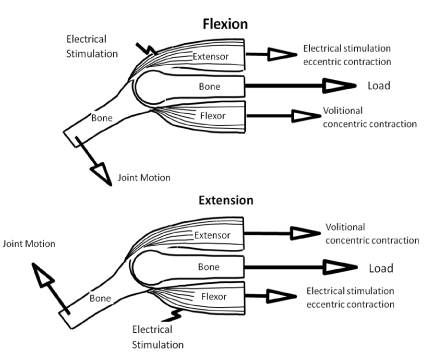 |
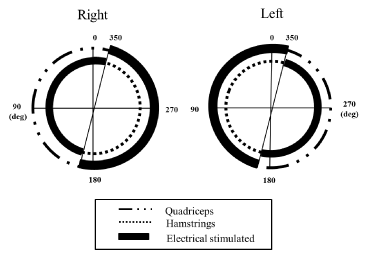 |
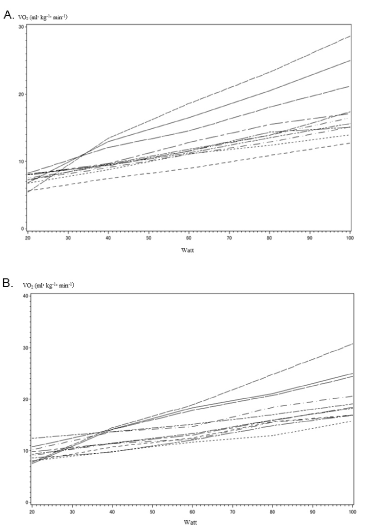 |
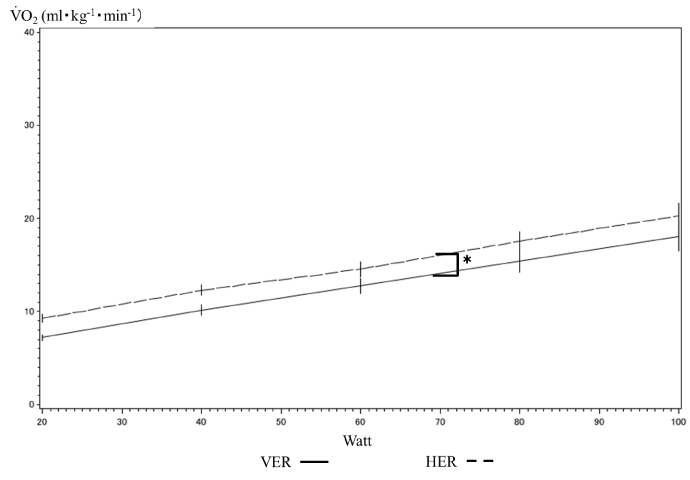 |
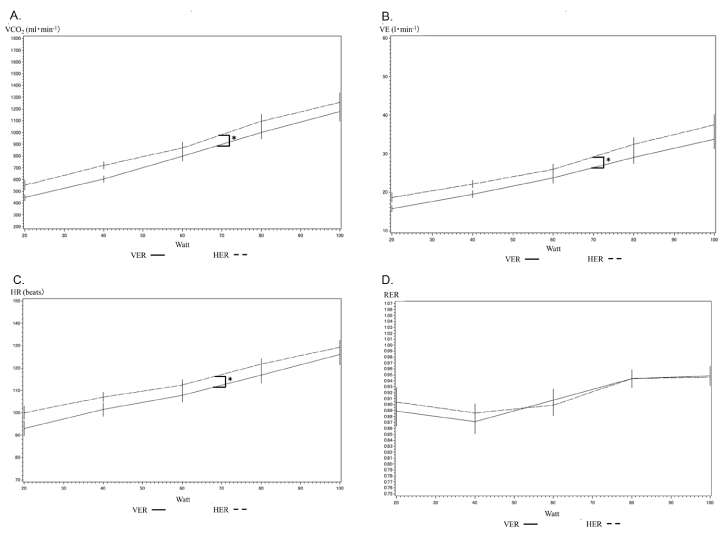 |
| Figure 1 | Figure 2 | Figure 3 | Figure 4 | Figure 5 |
Post your comment
Relevant Topics
- Electrical stimulation
- High Intensity Exercise
- Muscle Movements
- Musculoskeletal Physical Therapy
- Musculoskeletal Physiotherapy
- Neurophysiotherapy
- Neuroplasticity
- Neuropsychiatric drugs
- Physical Activity
- Physical Fitness
- Physical Medicine
- Physical Therapy
- Precision Rehabilitation
- Scapular Mobilization
- Sleep Disorders
- Sports and Physical Activity
- Sports Physical Therapy
Recommended Journals
Article Tools
Article Usage
- Total views: 14609
- [From(publication date):
December-2013 - Aug 17, 2025] - Breakdown by view type
- HTML page views : 9959
- PDF downloads : 4650
